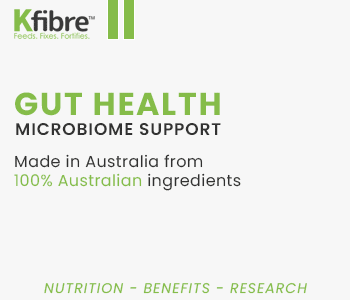Dr Peter Dingle, author of My Dog Eats Better Than Your Kids, examines the life-threatening condition that is peanut allergy …
Food allergies as well as many other atopic disorders have been increasing in children over the past few decades. Asthma has plateaued, while eczema and food allergies keep climbing.
Food allergies affect 4% to 6% of children and 3% to 4% of adults. The most common food allergens in children include cow’s milk, egg, soy, peanut, tree nut, shellfish, and fish. Estimates for allergies to peanuts, other tree nuts or both are between 0.5% and 1% to 2%. About 3% of children have a positive peanut allergy test (such as a skin prick test) but only one-third of these will develop reactions upon eating peanuts. The occurrence of peanut allergy in childhood varies greatly in different countries but Australia is a country with a relatively high prevalence of peanut allergy.
While the percentage of people with peanut allergies is relatively low, the reactions are severe. They are one of the most dangerous forms of food allergy and the number one cause of death from anaphylactic shock. Each year in the United States peanut allergies cause about 30,000 anaphylactic reactions and 200 deaths. Even the smallest amount of nut contamination, as low as 2 milligrams of whole peanut, can have severe results.
The allergies generally develop in early childhood with a median age of onset at 24 months. Unlike many other food allergies, it is less likely for an individual to develop a tolerance to peanuts; these allergies have lifelong lifelong reactions, becoming more severe with age. In most children under five years of age with peanut allergy, the allergy will continue into later childhood. However, 20% of children do grow out of their peanut allergy.
Despite the gravity of the disease there is very little known about the causes of peanut allergy. Underlying factors responsible for the increase in food allergies and atopic disorders may include bottle feeding, early introduction of solid foods and imbalance in the immune system (T helper development in favour of Th2 over Th1 cells).
What is it?
Peanut allergies occur when the immune system mistakes a harmless substance such as peanuts for an infectious one and begins to attack it.
The immune system acts to release histamine into the blood and antibodies from cells and organs to fight the perceived infection. The chemicals that the body releases can affect tissues including the eyes, nose, skin, airways, intestines and blood vessels.
Peanut allergy symptoms characteristically occur quickly, within minutes of ingesting peanuts or peanut-contaminated food. The majority of allergic reactions to peanuts are mild and consist of hives around the mouth where a peanut or part of a peanut has touched the skin, or more generalised hives on other parts of the body.
Mild reactions include:
- Stomach ache
- Runny nose
- Itchy skin
- Itchy, watery eyes
- Rash and eczema
- Urticaria
- Tingling of lips and tongue
More severe symptoms include:
- Laryngeal oedema
- Asthma
- Diarrhea
- Vomiting
- Angioedema (swelling of face and around the eyes)
- Anaphylaxis
Causes
Little is known about the causes of peanut allergy, although children who have atopy, asthma, other food allergies and family history of peanut allergies are at a greater risk of having peanut allergies themselves.
It has also been suggested that peanut allergies are linked to soy milk and soy formula, however research has found no increase in the risk of the peanut-specific immunoglobulin E antibodies or the peanut allergy during the first two years of life for children on a soy formula.
Some studies suggest a transfer of peanut allergy through mother’s breast milk, as peanut protein is found in breast milk of lactating women. However, this does not appear to bring about the peanut sensitization. Studies show the percentage of mothers who breastfed was not associated with allergy to peanuts, and that the mothers of children with the allergy did not eat significantly more peanuts during breastfeeding than mothers of children without the allergy. The breastfeeding theory does not explain why some children develop peanut allergy and others do not.
The increase in allergic disease seems to have something to do with our Western lifestyle because it happens in the West, and when people move from developing countries to a First World environment they seem to get more allergies – including peanut allergies.
One hypothesis which has growing support is the “hygiene hypothesis,” also referred to as “exaggerated hygiene.” This suggests that little or no exposure to bacteria and viruses during a critical period of infancy can lead to an imbalance in the immune system and result in diseases such as asthma, especially in high-risk groups, like children with parents who have asthma. Researchers theorise that when infants are exposed to germs early on, their immune systems are pushed to go in an “infection-fighting direction.” Without this push, the immune system’s shift to infection fighting is delayed, and it becomes more likely to overreact to allergens – dust, mould, and other environmental factors such as food molecules that most people can tolerate.
According to this theory, over-clean environments may be at the root of the problem. Research also shows allergies and asthma are less common among farm children, children with cats, dogs or pigs in their homes, children who begin day care at an early age, and children from large families.
More likely it is the conditions that lead to gut dysbiosis – imbalances in the intestinal flora, such as pregnant mothers and neonate use of antibiotics and Cesarean births in particular – that contribute to the increase in allergies including peanut and other food allergies. We are, quite literally, too clean inside.
Gut function
The gut is a dynamic living organ in the body that is in constant contact and communication with its surrounding media. The mucous membrane absorbs and assimilates foods and serves as a barrier to pathogens and other foreign chemicals and particles (antigens). Optimal functioning of the gut relies on good intestinal integrity. When this integrity is compromised, the permeability of the gut may be altered; little gaps appear and gut function erodes. Two major factors that determine the integrity of the gut are health of the gut lining (the mucosa) and a balanced bacterial population.
The human gut is the natural habitat for a large and dynamic bacterial community with more than one hundred trillion bacteria and hundreds of different species. The biggest amount, 30% to50%, is in the large intestines including over 400 species, which affect its cell biology, structure and balance.
Major functions of the gut bacteria include: metabolic activities that result in improved nutrition through the breakdown of food into usable energy; important feeding effects on the gut lining; immune structure and function; and protection of the colonised host against invasion by “alien” microbes. The gut bacteria also help manage gut physiology, particularly barrier integrity.
The gut lining (mucosa) is composed of close fitting, thin and semi-permeable (epithelial) cells separated by tight junctures. When the intestinal mucosa (cells including enterocytes and colonocytes) is disrupted, the permeability may increase, allowing larger particles, bacteria, undigested foods or toxins to cross the barrier into the blood… causing an immune reaction and a subsequent food allergy.
Unlike most other cells in the body which get their energy and nutrients from the blood supply, more than 50% of the energy needs of the small intestine and more than 80% of the energy of the large intestine (where most of the bacteria are) come directly from the food in the gut. The preferred food of these cells are short chain fatty acids like butyrate, acetate and propionate which are derived from the metabolism of indigestible carbohydrates in dietary fibre by beneficial gut bacteria, especially Bifidobacteria. The bacteria in the gut literally create the “food” for the gut lining.
Any change in the relative proportions of the different bacteria alters the subsequent nutrients available for the digestive tract and its health. If the right food is not available, the cells can literally get sick and starve.
Pathogenic bacteria or other microorganisms that colonise the gut can also cause damage to the GI mucosa by releasing toxins. Fortunately, the good gut bacteria help to keep the pathogenic bacteria in check. Many of the good bacteria produce lactic and acetic acid that control intestinal pH and inhibit the growth of Candida albicans, E. coli, and other bacteria that have more pathogenic qualities. Recent research on low birth weight neonates has shown probiotics significantly reduce the incidence and intensity of enteric colonization by Candida.
Probiotics
While probiotic (and prebiotic) therapy has been known for millennia, it has largely been disregarded by the medical world, until recently. There is currently a rapidly growing appreciation for the role of the enteric flora in health and disease. Overwhelming evidence has accumulated about the role of healthy gut bacteria in the treatment and possible prevention of inflammatory bowel diseases, Crohn’s disease and ulcerative colitis including counteracting gut barrier dysfunction associated with inflammation and infection.
About 80% of the body’s immune system is localized in the gastrointestinal tract. Experimental data and clinical studies have shown that the immune system of infants can be stimulated by the intestinal bacteria, with specific prebiotics and probiotics being shown to promote mucosal immunologic maturation in infants. The first months of life represent a critical period for the maturation of the infant’s immune system and, thus, a window of opportunity for measures to improve immune function and reduce the risk of disease.
The mechanism by which prebiotics and probiotics may benefit a developing immune system is that allergic diseases are reported to be caused by a skew in the balance between T helper type 1 and 2 cells. Because some lactic acid bacteria have been shown to stimulate IL-12 production, which in turn shifts the balance between the T helper cell response from type 2 to type 1, they have the potential to either prevent or ameliorate disease conditions or both. T helper cells type 2 are associated with allergic diseases and it is the T cells which then instruct the B cells to manufacture antibodies.
Numerous recent studies including blinded placebo controlled studies (the gold standard of clinical studies) have supported these findings. In one study, infants at risk of developing atopy who received special probiotics during the first six months of life had a fifty percent reduction in atopic dermatitis after two years compared to the control group. The intake of probiotic-supplemented yoghurt reduced Japanese cedar pollinosis symptoms in infants. Administration of the probiotics at the time of introduction of cow’s milk in the infant’s diet resulted in higher tolerance to cow’s milk.
In a blinded placebo control study of 251 children, ages three to 12 years, special probiotics showed a small reduction in the days of illness, respiratory tract infections and gastrointestinal disorders. The intake of probiotics to allergy-prone infants also did not to impair antibody responses to diphtheria, tetanus, or Hib, but appeared to improve the response to Hib immunization in six-month-old infants.
The beneficial effect of prebiotics (Oligosaccharides) has also been demonstrated in a prospective, double-blind, randomised, placebo controlled trial of 259 infants on the development of atopic dermatitis in a high-risk population of infants.
A number of studies have now shown no adverse effects associated with probiotic use in infants as young as neonates, even in highly susceptible groups.
The cause of the problem
Possible factors contributing to disruption of healthy gut bacteria, gut dysbiosis and an increased risk of developing allergies, including peanut allergy, as an infant include:
- Antibiotics given to the mother or child;
- Cesarean birth;
- Preservatives such as antimicrobials; and
- Poor food such as dairy and wheat.
It is widely known that the use of broad spectrum antibiotics has negative effects on intestinal integrity and may alter the balance between beneficial and pathogenic bacteria. This is especially important in children, for whom antibiotics are prescribed frequently.
This effect may be not only on a newborn receiving antibiotics, but also if the expecting mother receives antibiotics. Colonization of the infant’s digestive tract occurs during the transition through the birthing canal, and gut dysbiosis may remain for up to twelve months after an initial disruption.
Clinicians should consider coadministration of probiotics with antibiotics.
Cesarean delivery alters the bacterial colonization of the gut for more than six months which normally occurs shortly after birth and may have a protective effect against the predisposition to asthma and allergies. A number of large studies have shown that Cesarean delivery is associated with wheezing and allergic sensitization.
The gastrointestinal tract of a healthy fetus is sterile. During the birth process and rapidly thereafter, microbes from the mother and the surrounding environment colonize the gastrointestinal tract until a dense, complex microflora develops.
Diet is a major factor in maintaining a healthy human gastrointestinal tract. In infants who are breast-fed, Bifidobacteria constitute about 90% of their intestinal bacteria; however, this number is lower in bottle-fed infants and when infants’ diets are changed to cow’s milk and solid food. Foods with a high prebiotic potential such as vegetables, fruit and beans (legumes) will help maintain a healthy gut bacteria population.
“Occam’s razor” is a basic premise of science and suggests that the simplest solution is the most effective. Unfortunately, in today’s pharmacology-dominated medical industry, this may not be the case. The addition of probiotics to infants and pregnant mothers is a simple, easy and a logical step now supported with a large amount of scientific evidence. And while colonisation in adults appears to be only short-lived, it is stable for as long as six months, and may persist for as long as 24 months.
This approach is cheap, easy to implement and has no negative side effects. The cost would be a mere fraction of the medical costs of one child who contracts a severe nut allergy. The added benefit is that we already know it will help in the reduction of other allergies such as asthma and gut-related problems.
For children, this is a win-win approach to lifelong good health.
 Dr Peter Dingle has a Bachelor of Education in Science, a Bachelor of Environmental Science with first class honours and a PhD. He conducts ongoing research into diet and nutrition, lifestyle and environmental impacts on health, well being and productivity. To find out more go to www.drdingle.com
Dr Peter Dingle has a Bachelor of Education in Science, a Bachelor of Environmental Science with first class honours and a PhD. He conducts ongoing research into diet and nutrition, lifestyle and environmental impacts on health, well being and productivity. To find out more go to www.drdingle.com














